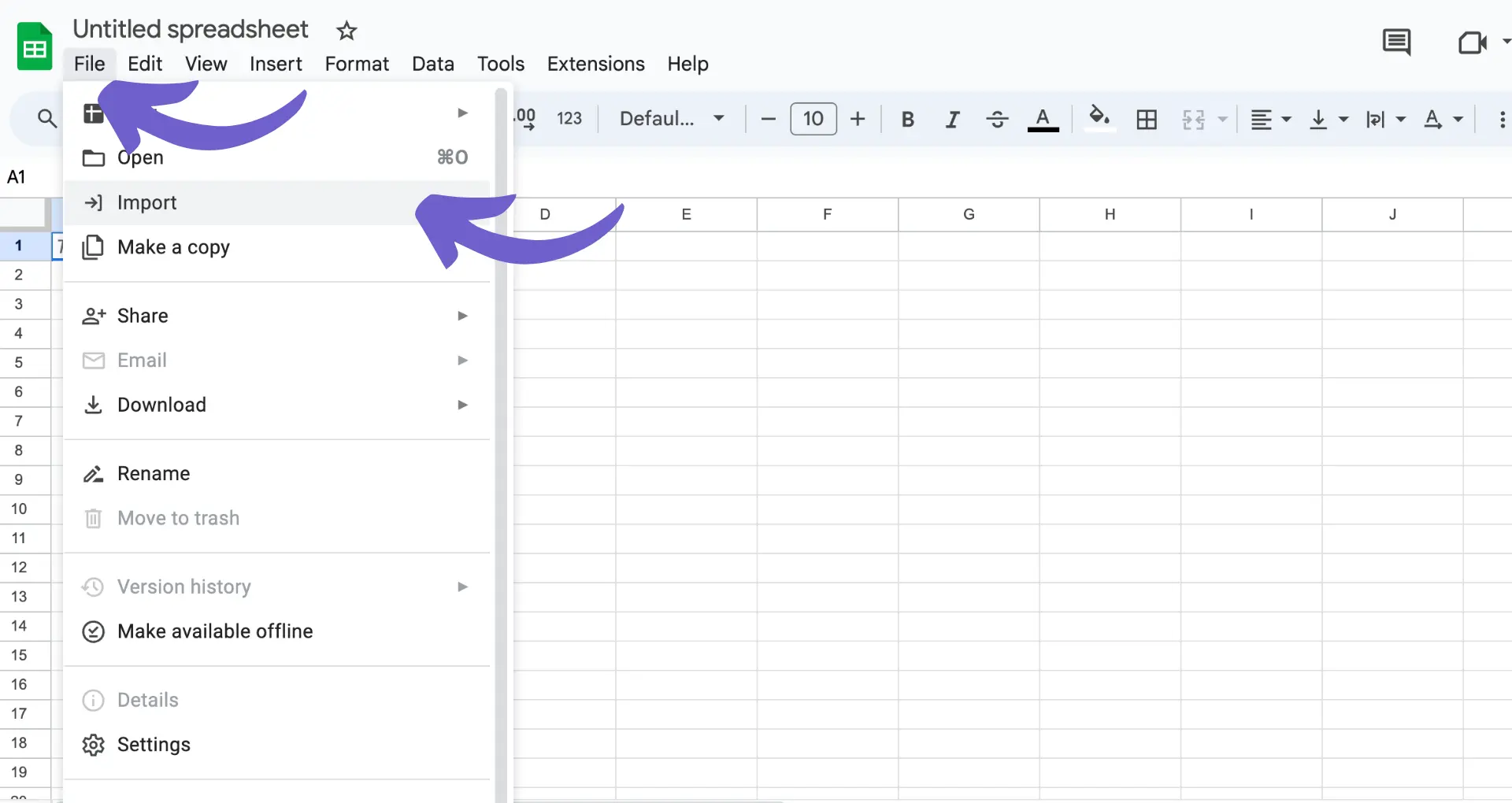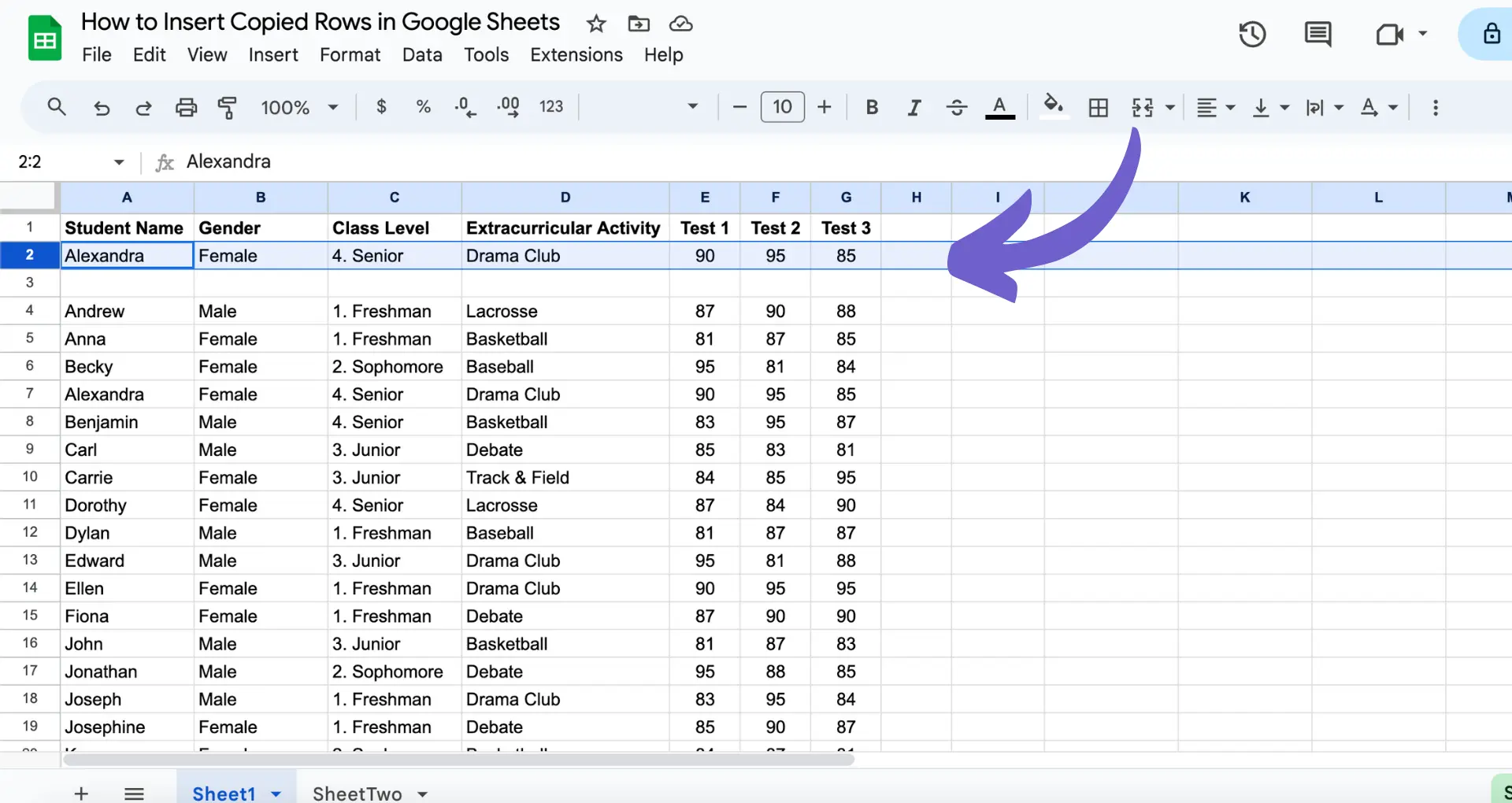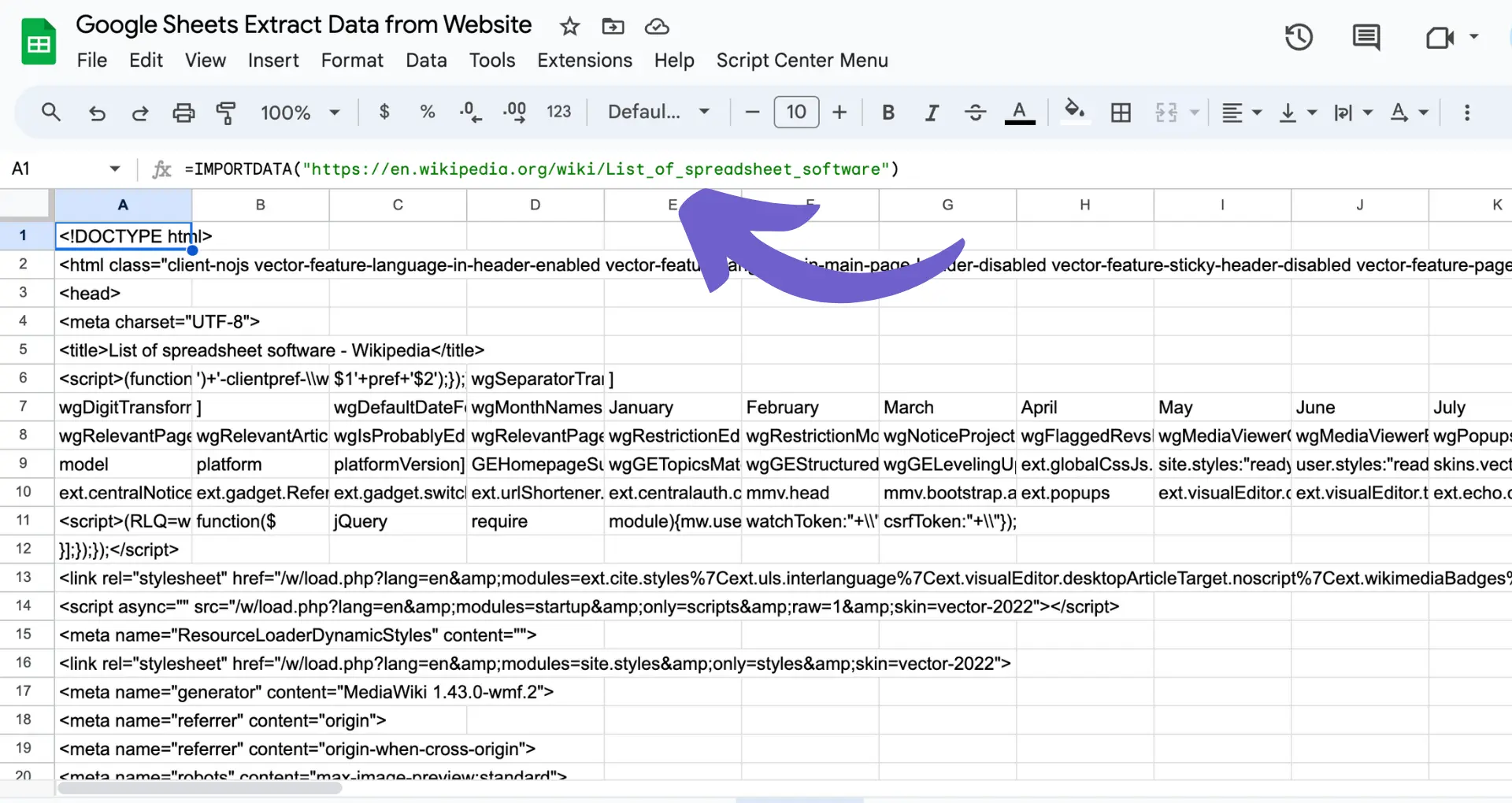





Import external data into Google Sheets with import functions.
By the way, we're Bardeen, we build a free AI Agent for doing repetitive tasks.
If you often import data, check out Bardeen's AI web scraping tool. It automates data extraction from websites to Google Sheets, saving you time.
Importing external data into Google Sheets is a powerful way to consolidate and analyze information from various sources. In this step-by-step guide, we'll walk you through the process of importing data from Excel files, CSV files, and even web pages directly into your Google Sheets. We'll also explore advanced techniques using Google Sheets API and Google Apps Script, along with best practices for data management and security.
Google Sheets offers a range of powerful import functions that allow you to fetch external data and integrate it seamlessly into your spreadsheets. These functions include:
Each function has its specific syntax and use cases. For example, IMPORTDATA is ideal for importing data from CSV or TSV files, while IMPORTHTML is best suited for extracting tabular data from web pages. IMPORTXML and IMPORTFEED are useful for importing data from structured formats like XML and RSS/ATOM feeds, respectively.
To use these functions effectively, it's essential to understand their syntax and the types of data sources they support. By leveraging these import functions, you can automate data import processes, saving time and effort while ensuring data accuracy and consistency.
Importing data from Excel to Google Sheets is a straightforward process that allows you to take advantage of the collaborative features and enhanced compatibility offered by Google Sheets. Here's a step-by-step guide on how to import Excel files (both XLS and XLSX formats) into Google Sheets:

By converting your Excel files to Google Sheets format, you can take advantage of features like real-time collaboration, version history, and seamless integration with other apps. Additionally, Google Sheets offers better cross-platform compatibility, as it can be accessed from any device with an internet connection and a web browser.
Save time and automate data import with Bardeen. Bring AI into your spreadsheet and reduce manual work.

CSV (Comma-Separated Values) files are a popular format for storing and exchanging tabular data between various applications, including Google Sheets. Uploading and converting CSV files into Google Sheets is a simple process, but there are a few common issues to be aware of, such as encoding and delimiter settings. Here's how to import CSV files into Google Sheets:
To maintain data integrity and facilitate easier analysis, consider the following tips when organizing CSV data within Google Sheets:
By following these steps and best practices, you can efficiently import and manage CSV files in Google Sheets, enabling seamless data analysis and collaboration.
Additionally, consider using GPT for Google Sheets to automate data analysis and enhance your workflow.

Google Sheets offers powerful functions that allow you to pull data directly from web pages into your spreadsheets. Two of the most useful functions for this purpose are IMPORTHTML and IMPORTXML.
IMPORTHTML is used to import data from a table or list within an HTML page. The syntax for this function is IMPORTHTML(url, query, index), where:
url is the web page URL containing the data you want to import.query is either "table" or "list," depending on the structure of the data on the web page.index is the position of the table or list on the page (1 for the first table or list, 2 for the second, etc.).For example, to import a schedule from a web page, you could use a formula like =IMPORTHTML("https://example.com/schedule","table",1).
IMPORTXML, on the other hand, is used to import data from XML or HTML elements using XPath queries. The syntax for this function is IMPORTXML(url,xpath_query), where:
url is the web page URL containing the data you want to import.xpath_query is the XPath query used to locate the desired data on the page.For instance, to import financial data from a market website, you could use a formula like =IMPORTXML("https://example.com/stocks","//div[@class='stock-price']").

Bardeen's LinkedIn profile enrichment playbook automatically extracts data from LinkedIn to Google Sheets, saving you time on manual data entry.
When using these functions, keep in mind that the web page structure may change over time, causing your formulas to break. To minimize this risk, try to use stable and reliable data sources. Additionally, be aware that importing large amounts of data may slow down your spreadsheet's performance.
By leveraging IMPORTHTML and IMPORTXML, you can easily integrate live web data into your Google Sheets, enabling you to create dynamic and automatically updating spreadsheets for various purposes, such as tracking schedules, monitoring financial data, or analyzing market trends. For more advanced needs, consider using AI web scraping tools to automate data extraction.
For more advanced data integration, you can use the Google Sheets API and Google Apps Script to pull data from external APIs directly into your spreadsheets. The Google Sheets API allows you to read and write data to your sheets programmatically, while Google Apps Script enables you to automate tasks and extend the functionality of your spreadsheets.
To get started with the Google Sheets API, you'll need to:
Here's a basic example using the Python client library to retrieve data from a public API and insert it into a Google Sheet:
from googleapiclient.discovery import build
from google.oauth2.credentials import Credentials
# Set up credentials and API service
creds = Credentials.from_authorized_user_file('path/to/token.json', ['https://www.googleapis.com/auth/spreadsheets'])
sheets_service = build('sheets', 'v4', credentials=creds)
# Specify the spreadsheet and range to update
spreadsheet_id = 'your-spreadsheet-id'
range_name = 'Sheet1!A1:B'
# Retrieve data from a public API (example: GitHub API)
import requests
api_url = 'https://api.github.com/repos/octocat/Hello-World/issues'
response = requests.get(api_url)
data = response.json()
# Extract relevant data and prepare it for insertion
values = [[issue['title'], issue['created_at']] for issue in data]
# Update the specified range with the retrieved data
body = {
'values': values
}
result = sheets_service.spreadsheets().values().update(
spreadsheetId=spreadsheet_id, range=range_name,
valueInputOption='RAW', body=body).execute()
print(f"{result.get('updatedCells')} cells updated.")
Google Apps Script is another powerful tool for automating data integration tasks. With Apps Script, you can write JavaScript code to interact with your Google Sheets and other Google services. Here's a simple example that retrieves data from a public API and inserts it into a sheet:
function importDataFromAPI() {
var sheet = SpreadsheetApp.getActiveSheet();
var apiUrl = 'https://api.example.com/data';
var response = UrlFetchApp.fetch(apiUrl);
var data = JSON.parse(response.getContentText());
var rows = data.map(function(item) {
return [item.name, item.value];
});
sheet.getRange(1, 1, rows.length, rows[0].length).setValues(rows);
}
By leveraging the Google Sheets API and Google Apps Script, you can create powerful integrations that automatically pull data from various sources and keep your spreadsheets up to date. This can save you time and effort, especially when dealing with large amounts of data or frequently updated information. For more tips on integrating different data sources, check out how to connect Google Drive with other apps.
When working with imported data in Google Sheets, it's crucial to manage access permissions and ensure data security, especially when dealing with sensitive information. Here are some best practices to keep your data safe and maintain its integrity:
To ensure data integrity and keep your imported data up to date, consider the following strategies:
Streamline your data management process with Bardeen's integration. Automate repetitive tasks, saving time and reducing errors.
By following these best practices and strategies, you can ensure that your imported data remains secure, up to date, and reliable within your Google Sheets. Remember, data security and integrity are ongoing processes that require regular attention and maintenance. Try using tools like data enrichment services to further enhance your data management.










SOC 2 Type II, GDPR and CASA Tier 2 and 3 certified — so you can automate with confidence at any scale.
Bardeen is an automation and workflow platform designed to help GTM teams eliminate manual tasks and streamline processes. It connects and integrates with your favorite tools, enabling you to automate repetitive workflows, manage data across systems, and enhance collaboration.
Bardeen acts as a bridge to enhance and automate workflows. It can reduce your reliance on tools focused on data entry and CRM updating, lead generation and outreach, reporting and analytics, and communication and follow-ups.
Bardeen is ideal for GTM teams across various roles including Sales (SDRs, AEs), Customer Success (CSMs), Revenue Operations, Sales Engineering, and Sales Leadership.
Bardeen integrates broadly with CRMs, communication platforms, lead generation tools, project and task management tools, and customer success tools. These integrations connect workflows and ensure data flows smoothly across systems.
Bardeen supports a wide variety of use cases across different teams, such as:
Sales: Automating lead discovery, enrichment and outreach sequences. Tracking account activity and nurturing target accounts.
Customer Success: Preparing for customer meetings, analyzing engagement metrics, and managing renewals.
Revenue Operations: Monitoring lead status, ensuring data accuracy, and generating detailed activity summaries.
Sales Leadership: Creating competitive analysis reports, monitoring pipeline health, and generating daily/weekly team performance summaries.